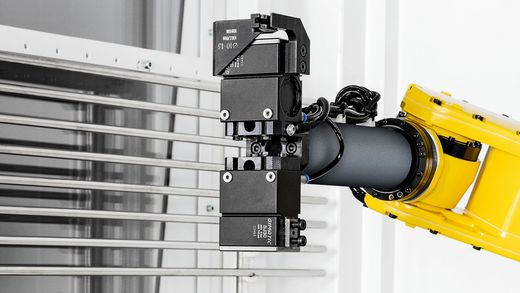Modern Grinding Technology and its Importance for Manufacturers of Woodworking Tools
It's boom times for industrial woodworking companies. This brings with it new challenges for producers, especially when it comes to responding flexibly to customer needs. Innovative grinding technology supports the production of outstanding cutting tools.
Customers want their machine tools to perform reliably over a long service life. This expectation is nothing new. What has changed are the materials to be processed and the production conditions:
- Wood and wood-like materials are becoming more and more exotic, especially newly invented composites. For example, high-performance laminates and new surface treatments are now in common use.
- Popular design features require complex tool geometries and cleaner cuts.
- This in turn has increasingly shorted the time frame from tool conception to production.
Manufacturing must keep up with all these requirements. At the same time, however, there are fewer and fewer qualified machine operators. In all, many factors need to be considered. Woodworking cutter manufacturers thus expect more from their machines than ever before.
In a perfect production world, toolmakers would have time to create a design, program the machine, simulate a prototype, and produce a cutting tool in a single operation. The good news? The future is now. How? With UNITED GRINDING’s advanced grinding technology and the practical expertise that cutting tool manufacturers can bring to the table.
Automated Machines for Complex Geometries
This is all made possible by automated CNC tool grinding and eroding machines that can produce extremely complex geometries in one clamping. When machining PCD cutting edges and inserts, grinding and eroding functions can even be combined in the same machine. And with automation options available for part loading and tool changes, cutting tool production can be brought to an unprecedented level.
Unlike in the metalworking industry, cutting tools for woodworking are generally highly individual. The variants are endless, especially with the emergence of many mixed materials. Programmable machines eliminate hours of guesswork, costly material waste, and other risks — whether the material is MDM, melamine, laminated chipboard, or hybrid plywood with a middle rubber layer.
WALTER Tool Studio design software
Long before a blank is inserted into a chuck, the WALTER Tool Studio design software allows you to simulate the grinding wheel that will grind tools made of carbide, PCD, or other super-hard materials from a blank. The WALTER tool grinding machine can also be programmed so that the grinding process starts closer to the workpiece accompanied by an in-process scanning. This reduces cycle times and increases productivity.
3D Simulation
An absolute highlight: With WALTER tool grinding machines, you can simulate the tool to be ground in 3D, set up a compression cutter (as an example), and program the grinding wheels without running or damaging them. Convenient: This ensures you have an accurate picture of what you will get.
Human Factor
The shortage of skilled workers means one thing above all else: Existing employees must be deployed wisely. Automated machine operation is worthwhile even in companies with low volumes and high throughputs. Using employees wisely also means that they are well trained. UNITED GRINDING offers its customers the professional training they need, from the most basic to the most advanced qualification levels in a company. Courses range from general grinding, operation, and programming to customized training. We offer this service on your own machines or at a UNITED GRINDING training location.
The problems facing woodworking cutter manufacturers today can be turned into competitive advantages tomorrow.
We would be happy to accompany you on this journey. Simply contact us to get started.









